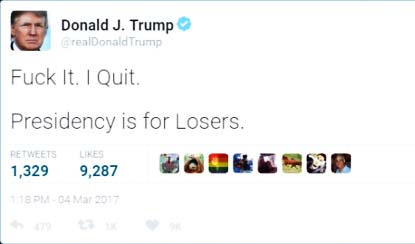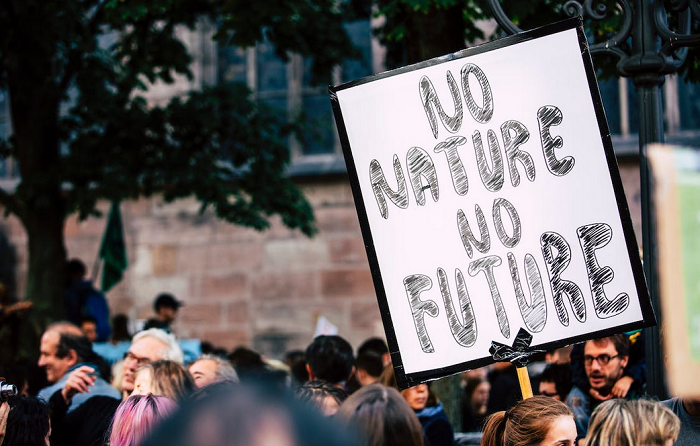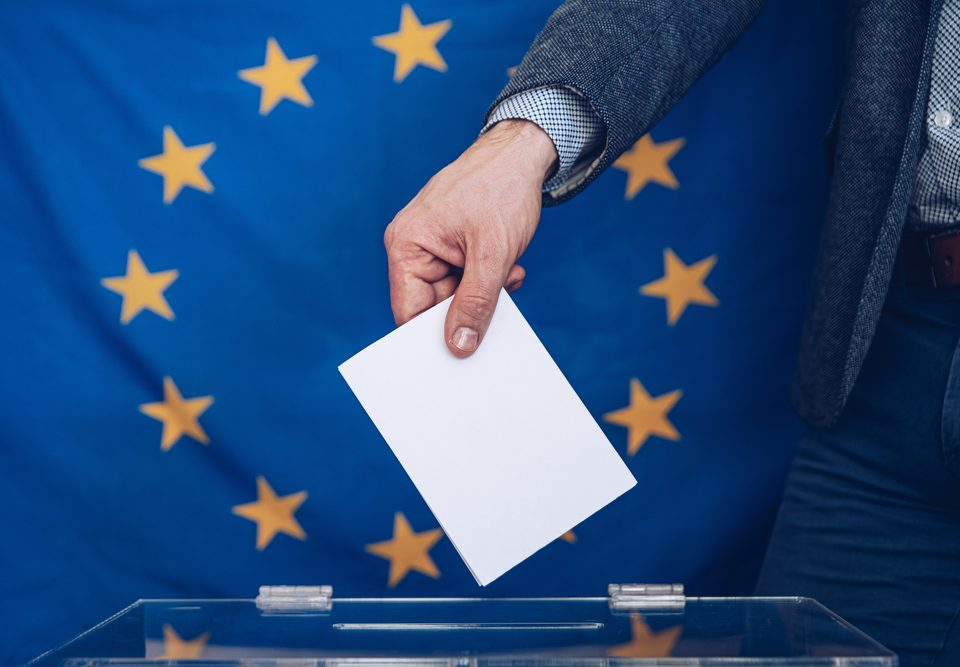


Cogito 8 – Governing Finance
18 December 2019
The Paradox of Family Policy
11 February 2020by Manon Berriche, PhD candidate at the médialab
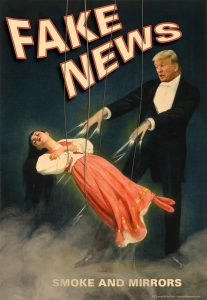
Trump’s Fake News. © Jeff Gates/Flickr. CC BY-NC-ND 2.0
Since the 2016 American presidential election, the public debate has been overrun by concerns about disinformation. To take a closer look at this phenomenon, researchers and journalists can take advantage of the growth of big data and computational social science(1)Lazer, D., Pentland, A., Adamic, L., Aral, S., Barabási, A. L., Brewer, D., . & Jebara, T – Computational social science, Science, 2019 to gather massive quantities of data about information circulated on the web — not to mention the countless URLs associated with them.
Contributions and Limits of Quantitative Analyses
Using these methods, several studies have highlighted the speed at which fake news is propagated on social networks(2)Vosoughi, S., Roy, D., & Aral, S. – The spread of true and false news online, Science, 2018 , and the – often considerable – engagement rates they generate. On this point, an article published in BuzzFeed showed that, during the months preceding Donald Trump’s election, the twenty most successful pieces of fake news on Facebook had triggered 8.7 million reactions, comments or shares(3) Silverman, C. This analysis shows how viral fake election news stories outperformed real news on Facebook. BuzzFeed, 16/11/2016.
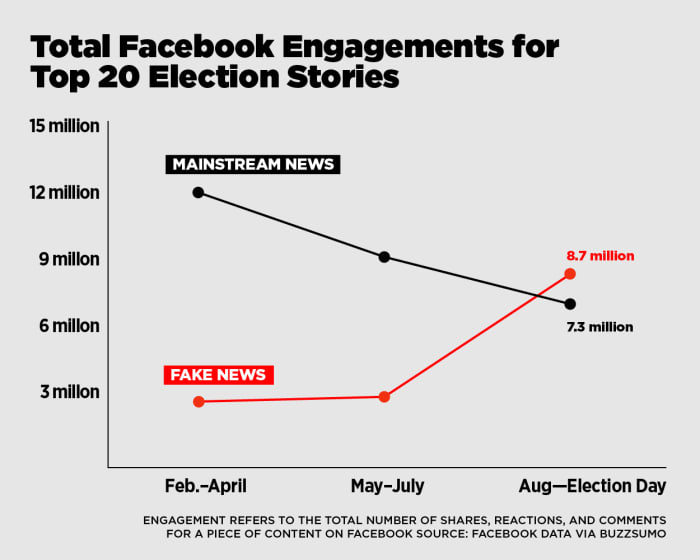
© BuzzFeed New
While this impressive volume confirms the appeal of some fake news for internet users, it doesn’t say a lot about their impact on public opinion. On the one hand, the number should be compared with the total number of interactions by Facebook users. Thus, if each Facebook user had only one interaction per day over the same period, the 8.7 million interactions would be reduced to … 0.006%!(4)Watts, D. J., & Rothschild, D. M. – The minority report on the fake news crisis:(spoiler alert: it’s the real news). in AA. VV., Understanding and Addressing the Disinformation Ecosystem, 2017
On the other hand, it would be an illusion to believe that digital traces left by users are indicative of their opinions or behaviour in real life (5)Bastard, I., Cardon, D., Fouetillou, G., Prieur, C., & Raux, S – Travail et travailleurs de la donnée, 2013. Indeed, among those 8.7 million interactions, there are comments, shares and 👍 😍 😯 😡 😢 😂, but it is difficult to accurately interpret the hidden meaning behind these ‘‘forests of symbols”(6)erpretation of signs that can be perceived in nature for decoding the world’s mysteries. In the poem, Baudelaire suggests using the method of synesthesia, in other words to use the correspondence between different senses because, for Baudelaire, the truth of sensations was only accessible to those who delved into their perceptions and expressed them through analogies, images and metaphors. The reactions are often less the sign of true interest in certain kinds of information than “identity-based signs that individuals project on their sociability”(7)Cardon, D. – Du lien au like sur Internet. Communications, 2013. We may therefore consider that a certain number of comments or shares of fake news are less signs of mass credulity than the expression of a diversity of systems of opinion (i.e. criticism, mockery, disapproval, support, etc.).
Specifying Engagement Rates Through Qualitative Analyses
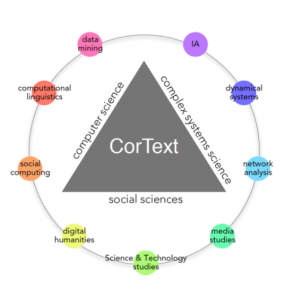
The CorTexT Platform stands a research facility that proposes on-line applications for open-science on textual corpuses analysis
In response to disinformation on social networks, it is indeed crucial not to focus on the high aggregated volumes of fake news in circulation or the high engagement rates they generate. We must also make use of more qualitative approaches through which to clearly identify if fake news is as successful as the quantitative data suggests.
We must therefore go in search of the confused words (“confuses paroles”) they contain and process them with new quali-quantitative methods(8)Venturini, T., Cardon, D., & Cointet, J.-P. – Méthodes digitales: Approches quali/quanti des données numériques, Réseaux, 2015, a major tool in the research conducted at the medialab.
Contexts and Functions of Interactions on Social Networks

Screenshot Facebook of Santé + Magazine
The aim of my thesis is to go beyond the number of interactions in order to understand the motivations and opinions behind them. Contrary to Laswell’s “hypodermic needle” model (1927) postulating the idea of the media’s almost magnetic control of individuals, it strives to reach beyond the issue of the effects of media content and also to question its function by gaining a more specific understanding of the relationship to information in the different social contexts in which it develops.
My preliminary research was based on theories growing out of cognitive psychology and the sociology of communication and media in order to explain why some kinds of content are more viral than others. The first study on the Facebook page of “Santé + Mag”, known for being an emblematic example of disinformation about health(9)about Santé Plus Mag : P. Bafoil – Fausses rumeurs et prescriptions dangereuses sur “Santé Plus Mag”, l’une des pages les plus populaires de Facebook, Les Inrockuptibles, 17/01/2018 // A. Sénécat – Santé+ Magazine, un site emblématique de la « mal-information » sur la santé, Le Monde, 25/05/2018 // A. Sénécat- Critiqué pour ses intox, Santé + Magazine assure avoir changé. Vraiment?, Le Monde, 27/07/2019, showed that even though it generates an impressive volume of interactions – around 11 million per month(10)Fletcher. R., Cornia. A, Graves L, Nielsen R.K. – Measuring the reach of “fake news” and online disinformation in Europe, Factsheets Reuters Institute, 2018, the latter are not triggered by the dubious content published about health issues on their Facebook page. In reality, its “success” is due above all to posts devoid of any informative content but containing everyday expressions such as ‘‘have a good weekend’’ or ‘‘Sister, I love you’’(11)Berriche, M., & Altay, S. – “Sister, I Love You!” Phatic Posts Are More Successful On Facebook Than Health Misinformation, 2019, the function of which is mainly social, like greeting cards.
Subsequently, I plan to analyse the comments attached to fake news, using textual analysis methods(12)Cointet, J. P., & Parasie, S. – Ce que le big data fait à l’analyse sociologique des textes, Revue française de sociologie, 2018 // Cointet, J. P., & Parasie, S. – Enquêter à partir des traces textuelles du web, Reseaux, 2019, in order to identify how information assessment strategies may emerge in the middle of ordinary discussions by internet users.
This project will thus foster greater knowledge of conversational spaces for circulating information and will complement work conducted at the medialab on the structure of the public sphere in the digital age(13)Cardon, D., Cointet, J.P., Ooghe, B., Plique, G. – Unfolding the Multi-Layered Structure of the French Mediascape. médialab working paper, 2019.
Manon Berriche is a graduate of the "Digital, New Technology and Public Policy" specialisation of the School of Public Affairs of Sciences Po as well as from the Interdisciplinary Research Center. She is now a PhD candidate at the médialab and at the Interdisciplinary Research Center.
Notes
| ↑1 | Lazer, D., Pentland, A., Adamic, L., Aral, S., Barabási, A. L., Brewer, D., . & Jebara, T – Computational social science, Science, 2019 |
|---|---|
| ↑2 | Vosoughi, S., Roy, D., & Aral, S. – The spread of true and false news online, Science, 2018 |
| ↑3 | Silverman, C. This analysis shows how viral fake election news stories outperformed real news on Facebook. BuzzFeed, 16/11/2016 |
| ↑4 | Watts, D. J., & Rothschild, D. M. – The minority report on the fake news crisis:(spoiler alert: it’s the real news). in AA. VV., Understanding and Addressing the Disinformation Ecosystem, 2017 |
| ↑5 | Bastard, I., Cardon, D., Fouetillou, G., Prieur, C., & Raux, S – Travail et travailleurs de la donnée, 2013 |
| ↑6 | erpretation of signs that can be perceived in nature for decoding the world’s mysteries. In the poem, Baudelaire suggests using the method of synesthesia, in other words to use the correspondence between different senses because, for Baudelaire, the truth of sensations was only accessible to those who delved into their perceptions and expressed them through analogies, images and metaphors |
| ↑7 | Cardon, D. – Du lien au like sur Internet. Communications, 2013 |
| ↑8 | Venturini, T., Cardon, D., & Cointet, J.-P. – Méthodes digitales: Approches quali/quanti des données numériques, Réseaux, 2015 |
| ↑9 | about Santé Plus Mag : P. Bafoil – Fausses rumeurs et prescriptions dangereuses sur “Santé Plus Mag”, l’une des pages les plus populaires de Facebook, Les Inrockuptibles, 17/01/2018 // A. Sénécat – Santé+ Magazine, un site emblématique de la « mal-information » sur la santé, Le Monde, 25/05/2018 // A. Sénécat- Critiqué pour ses intox, Santé + Magazine assure avoir changé. Vraiment?, Le Monde, 27/07/2019 |
| ↑10 | Fletcher. R., Cornia. A, Graves L, Nielsen R.K. – Measuring the reach of “fake news” and online disinformation in Europe, Factsheets Reuters Institute, 2018 |
| ↑11 | Berriche, M., & Altay, S. – “Sister, I Love You!” Phatic Posts Are More Successful On Facebook Than Health Misinformation, 2019 |
| ↑12 | Cointet, J. P., & Parasie, S. – Ce que le big data fait à l’analyse sociologique des textes, Revue française de sociologie, 2018 // Cointet, J. P., & Parasie, S. – Enquêter à partir des traces textuelles du web, Reseaux, 2019 |
| ↑13 | Cardon, D., Cointet, J.P., Ooghe, B., Plique, G. – Unfolding the Multi-Layered Structure of the French Mediascape. médialab working paper, 2019 |

